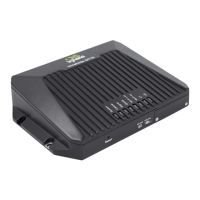InHand VG710 InVehicle Gateway User Manual
25
5.3.4 OpenVPN
OpenVPN is realized based on the application-layer VPN of the OpenSSL library. It supports multiple
authentication methods such as the certificate, key, and user name/password. Compared with the
traditional VPN, it is simpler and easier to use.
Authentication methods:
Authentication
method
Operation on the web page
None
No authentication is required.
User
name/password
Enter the user name and
password created on the OpenVPN server, click
"VPN >> Certificate Management", and import the CA certificate, public key,
and private key for authentication.
Pre-shared key
Enter the pre-shared key created on the OpenVPN server.
Digital certificate
Click "VPN >> Certificate Management" and import the CA certificate, public
key, and private key.
Digital
certificate/user
Enter the user name and password created on the OpenVPN server, click
"VPN >> Certificate Management", and import the CA certificate, public key,
and private key for authentication.
Digital
certificate/TLS
authentication
Enter the pre-shared key created on the OpenVPN server, click "VPN >>
Certificate Management", and import the CA certificate, public key, and
private key for authentication.
Digital
certificate/TLS
authentication/user
Enter the pre-shared key, user name, and password created on the OpenVPN
server, click "VPN >> Certificate Management", and import the CA
certificate, public key, and private key for authentication.
Method for settings when the gateway is connected to the OpenVPN server as a client:
OpenVPN can be configured manually, or OpenVPN configurations can be imported. In the following
example, the authentication type is a digital certificate.
1. Set the OpenVPN parameters for the gateway as shown in the figure below, ensuring that the
network parameters at both ends of the tunnel are consistent. Click Apply & Save.

